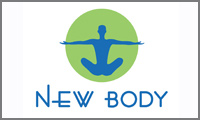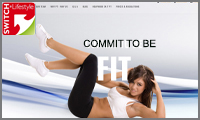Frequently Asked Questions
 Have you ever had a training program completely personalized with all the parameters set for the best and quickest result?
Have you ever had a training program completely personalized with all the parameters set for the best and quickest result?- Are you tired from going from gym to gym looking for somebody to help you make your dream come true?
- Have you been bored of the impersonal gyms or keep trying to draw the attention of your trainer in the need of trying to get some assistance?
- Is it better to do cardiovascular exercise at the beginning or at the end of your work out?
- Are you tired of being over obese and looking for somebody who will really help you?
- Is there a special date approaching? Would you like that day to be presentable, to look your best in the photos?
- Do you want to live longer, better, healthier and to improve your lifestyle?
 We often have wrong impression about personal training, but we will show you that personal training, is not only for famous people or high level athletes and of course it is not like having someone there all the time, constantly shouting at you.
We often have wrong impression about personal training, but we will show you that personal training, is not only for famous people or high level athletes and of course it is not like having someone there all the time, constantly shouting at you.
Personal training gives you the chance to workout on your own having a highly qualified fitness professional by you side, who will guide you, advise you, motivate and empower you all the time.
If you are a beginner, personal training is the best introduction to the gym. In this way, you will soon enrich your knowledge as well as you will gain self confidence. If you are more advanced, personal training will help you reach a higher fitness level. You will have faster results when you train with a personal trainer and this will make you become consistent to the fitness program and to your nutrition as well. Research has shown that it is less likely to miss a scheduled training with a personal trainer.
 Working with a Personal Trainer removes all the guesswork from your program. All you need to do is turn up for your appointment dressed in your workout gear. Your Personal Trainer will utilise the information gained from you induction to provide motivating, effective and challenging workouts for you to do. No more repetitive programs. Your Personal Trainer will continue to adapt your program as you improve, and continuously consult with you regarding your likes and dislikes, level of satisfaction and feedback regarding your training sessions.
Working with a Personal Trainer removes all the guesswork from your program. All you need to do is turn up for your appointment dressed in your workout gear. Your Personal Trainer will utilise the information gained from you induction to provide motivating, effective and challenging workouts for you to do. No more repetitive programs. Your Personal Trainer will continue to adapt your program as you improve, and continuously consult with you regarding your likes and dislikes, level of satisfaction and feedback regarding your training sessions.
Your personal training sessions can involve anything from cardio, yoga, pilates, weights, fit balls, bants, stretching etc.
Personal trainers usually give you:
- A fitness evaluation. This is a series of tests - including cardiovascular, flexibility, body mass index and body fat measurement - to see what kind of shape you are in. Your trainer should ask about your health conditions, medications and exercise experience.
- A personalized exercise program. This is designed specifically for you. There is no one-size-fits-all approach.
- Supervised exercise. You are given one-on-one attention to make sure you are using proper form and technique and that you get the most from your workout without getting injured. The benefits of your program are explained.
 A personal trainer is a fitness professional who develops and implements an individualized approach to physical fitness, generally working one-on-one with a client. A trainer may help an individual assess their level of physical fitness and help them work toward a personal fitness goal through proper exercise instruction and personal motivation. The scope of practice for personal trainers is to enhance the components of fitness for the general, healthy population. The 5 classic components of fitness are muscular strength, muscular endurance, body composition, cardiovascular endurance, and flexibility.
A personal trainer is a fitness professional who develops and implements an individualized approach to physical fitness, generally working one-on-one with a client. A trainer may help an individual assess their level of physical fitness and help them work toward a personal fitness goal through proper exercise instruction and personal motivation. The scope of practice for personal trainers is to enhance the components of fitness for the general, healthy population. The 5 classic components of fitness are muscular strength, muscular endurance, body composition, cardiovascular endurance, and flexibility. gets you 80% better results results 3 times faster than working out on your own
gets you 80% better results results 3 times faster than working out on your own- gives you an individualized program for your body type and for your specific needs and goals
- increases self-esteem and self-confidence
- educates you by teaching safety so you prevent injuries and provides you with “cutting edge” information in training and nutrition
- enables you to advance past plateaus, helps you move past self imposed limitations and helps you to achieve goals that you never thought were possible
- provides you with professional guidance and expertise with a variety in types of training to help your personal growth
- progresses your routines to keep your workouts fresh and interesting, designed for you and your lifestyle
- it motivates you, reduces or prevents boredom , makes it easier to exercise more consistently and helps you commit to your program and it’s fun!
- burns up extra calories, increases your metabolic rate, tones and firms your muscles, improves your body shape, helps you lose weight and keeps you at your right body weight, helps you sleep better, strengthens your immune system, improves circulation and helps lower blood pressure, makes you more flexible, helps make your body more agile, increases your range of motion, gives you more energy, builds strength, improves endurance, improves your coordination and balance, eases and may eliminate pain, strengthens your bones and decreases the chances of developing osteoporosis, strengthens the heart, lowers your risk of death from cancers, enables you to relax more quickly and completely, alleviates depression, improves the quality of life, helps you live longer and better
- makes people look at you and say, “Wow! You look great!”
 At first you have a 30 minute consultation with your personal trainer about your health condition, old injuries and your present fitness condition. It is a great chance to be totally sincere about how and what you want to change on you and what you expect to achieve with personal training. Then your personal trainer will prepare your fitness program and explain to you how it will work. You will then decide together about the weekly scheduled sessions as well as the prepaid package sessions you will have.
At first you have a 30 minute consultation with your personal trainer about your health condition, old injuries and your present fitness condition. It is a great chance to be totally sincere about how and what you want to change on you and what you expect to achieve with personal training. Then your personal trainer will prepare your fitness program and explain to you how it will work. You will then decide together about the weekly scheduled sessions as well as the prepaid package sessions you will have.A typical personal training lesson lasts 60 minutes. In this time you will soon acquire more knowledge of the proper way to workout than you would achieve by yourself. Your personal trainer will encourage you to have some extra training in your schedule, except from the ones with him. Additionally, he will suggest some classes that are suitable for you to attend.
Each session starts with a warm up phase so as to prepare your muscles for the training. During the warm up phase, your personal trainer will discuss your progress and will inform you how you will proceed. By training with a personal trainer, not only you get the most out of the session both physically and mentally but you also try exercises and techniques that you could not do on your own.
As you progress, your personal trainer will show you new techniques and will change your fitness program so that you will never get bored. After each lesson you will notice important improvement in your flexibility through guided stretches you could never do on your own. These guided stretches are specific exercises in your fitness program. With these stretches you will achieve better flexibility, agility and body shape. Don’t forget that having someone stretch your muscles is extremely relaxing and it is a great way to finish your session.
 If your lifestyle is characterized by sitting or remaining inactive for most of the day (for example, in an office), with little or no exercise, it is believed to be a factor in obesity, and, as such, may contribute to other diseases, such as type II diabetes, heart disease, depression and even hemorrhoids.
If your lifestyle is characterized by sitting or remaining inactive for most of the day (for example, in an office), with little or no exercise, it is believed to be a factor in obesity, and, as such, may contribute to other diseases, such as type II diabetes, heart disease, depression and even hemorrhoids.Lack of exercise causes muscle atrophy, i.e. shrinking and weakening of the muscles and accordingly increases susceptibility to physical injury. Additionally, Physical fitness is correlated with immune system function; a reduction in physical fitness is generally accompanied by a weakening of the immune system
 Choose endurance activities for weight loss such as jogging, aerobics, bicycling, rowing, or swimming.
Choose endurance activities for weight loss such as jogging, aerobics, bicycling, rowing, or swimming.
Exercise at a moderately intense level. You should be able to talk without running out of breath during the activity.
Exercise for more than 40 minutes.
- During the first 20 minutes, your body taps into your sugar reserves (carbohydrates stored as blood glucose and muscle glycogen). Between 20 to 40 minutes of exercise, the body continues to use up your sugar reserves and starts to tap into your body fat.
- After 40 minutes the body starts to burn even more fat.
Choose aquatic workouts or exercise in the cold. This causes the body to burn more energy and melt fat more quickly. The body draws on its fat reserves to stay warm.
 The 60-minute suggestion is based on the National Academy of Science's recommendation for people who are trying to prevent weight gain, or keep themselves from regaining after weight loss -- not for people who are trying to increase or maintain their cardio-respiratory fitness or health. There's plenty of research to show that 30 minutes of physical activity a day will help you gain lots of health and fitness benefits.
The 60-minute suggestion is based on the National Academy of Science's recommendation for people who are trying to prevent weight gain, or keep themselves from regaining after weight loss -- not for people who are trying to increase or maintain their cardio-respiratory fitness or health. There's plenty of research to show that 30 minutes of physical activity a day will help you gain lots of health and fitness benefits.
Remember that you don't have to do all your exercise in one session. If you already exercise vigorously at the gym several times a week, there's no reason to quit. But if 60 minutes seems like too much for you, try 30 minutes a day as a starting goal.
The most important thing is that you do something.
 If you're new to exercise, or have struggled with it in the past, talk with your doctor about your exercise plans. After that, start by incorporating more activity into your daily life. For instance:
If you're new to exercise, or have struggled with it in the past, talk with your doctor about your exercise plans. After that, start by incorporating more activity into your daily life. For instance:
- If you always take the elevator, try the stairs.
- If you try to park next to the door of wherever you're going, park further away and walk.
- If your habit is to eat at your desk, take a 10- to 20-minute walk first, then have your lunch (or take a walk after you eat).
- Instead of watching TV all day Saturday and Sunday, plan active weekends. Go to the park, take a walking tour, ride your bike, or row a boat.
If you prefer a more ambitious routine, you can join a gym or try working out at home. Try for 30 to 60 minutes of continuous aerobic activity (such as swimming, biking, walking, dancing, or jogging) at least three to five times a week, at 60% to 90% of your maximum heart rate. Weight training can also help tone your muscles and elevate your resting metabolism rate (the rate that the body burns fuel for energy). Try at least one set (eight to 12 repetitions) each of eight to 10 different exercises, targeting each of the body's major muscle groups.
Whatever plan you decide on, it's a good idea to set weekly goals:
- Write down what activity you plan to do, on what day of the week, for how long, and at what time of day. Be as specific and realistic as possible. For instance, write down "Tuesday: Walk for 20 minutes at 7 p.m., to the park and back."
- At the end of each week, review your goals and set new ones for the upcoming week.
Research shows that setting goals will help you stick to your program. It will clarify what you're supposed to do and let you track your progress. If you hit a roadblock later on, you can refer to what has worked in the past, or use your accomplishments to re-energize yourself.
 There is virtually no medical condition that will keep you from doing any type of exercise. Even people with heart failure -- who were long told not to exercise at all -- can benefit from moderate amounts of activity.
There is virtually no medical condition that will keep you from doing any type of exercise. Even people with heart failure -- who were long told not to exercise at all -- can benefit from moderate amounts of activity.
And people with limited mobility can often do water exercises, or do yoga or other exercises while seated in a chair (some "chair exercise" videos are now on the market). Of course, if you have any medical condition, check with your doctor before starting any exercise program.
 Check with your doctor. Lifting weights will not only help you lose weight, but maintain the loss. Here's why:
Check with your doctor. Lifting weights will not only help you lose weight, but maintain the loss. Here's why:
- Muscle keeps your metabolism revved up, burning calories, fat, and glucose (sugar).
- When you lose weight, up to 25% of the loss may come from muscle, resulting in a slower metabolism. Weightlifting will help preserve or rebuild any muscle you lose by dieting.
- Muscle helps you with aerobic exercise. The stronger you are, the better you will be at any aerobic activity.
- Weight training improves your body's muscle-to-fat ratio (you end up with less body fat and more muscle), which improves both your health and your fitness level.
- Gaining muscle will help you look better as you define and tone your physique.
 In interval training, you alternate between bursts of higher-intensity exercise and periods of less-intense exercise (or "active rest"). As you get more fit, you decrease the "rest" time and increase the high-intensity periods. You'll see big fitness gains if you train this way regularly.
In interval training, you alternate between bursts of higher-intensity exercise and periods of less-intense exercise (or "active rest"). As you get more fit, you decrease the "rest" time and increase the high-intensity periods. You'll see big fitness gains if you train this way regularly.
For example, if you now run for 30 minutes at 6 mph, try this routine: Jog for five minutes to warm up. Then, increase your speed to 6.5 mph for one to two minutes (less if you can't go that long). Then, jog for a few minutes at your normal speed, then again at the faster speed, and so on until you reach your time limit. Your ratio of work to active rest would be 2:3 if you ran for two minutes at 6.5 mph, then jogged for three minutes at 6 mph.
You can also use your heart rate to set intervals. For example, if your heart rate hits 70% of your maximum when you jog at 6 mph, start at that speed. Then increase either your speed or elevation (if you're on a treadmill) to get your heart rate to 85% or 90% of your maximum heart rate for one to three minutes. Then, go back to jogging at the 70% heart rate, and continue alternating.
We recommend interval training just once a week to start, as it is more intense than you may be used to. Once you get a feel for it, you can do it more often.
 The body mass index (BMI) is a simple way for men and women to estimate body fat based on their height and weight. From the BMI, it is possible to determine your healthy weight range.
The body mass index (BMI) is a simple way for men and women to estimate body fat based on their height and weight. From the BMI, it is possible to determine your healthy weight range.
For the majority of Americans, the BMI is the most up-to-date and scientifically sound method available for determining healthy weight. One of the limitations of BMI is that it can over-predict overweight or obesity in people who are lean and muscular.
It is important to know that people who are classified as overweight or obese can still be healthy as long as they are fit. In one well-known study, fit people with BMIs that classified them as overweight or obese were healthier and lived longer than unfit people who were at normal weight.
 There are several reasons why your weight can hit a plateau, including:
There are several reasons why your weight can hit a plateau, including:
- Losing weight too quickly . When this happens, your metabolism (the rate at which your body burns calories) can slow down because your body senses it is starving.
- Losing muscle . When you lose weight, up to 25% can come from muscle tissue. And since muscle is the engine in your body that burns calories and helps maintain your metabolism, losing it can hinder weight loss.
- Reaching your body's particular set point -- the weight and metabolic rate your body is genetically programmed to be . Once you reach that point, it's much harder to lose weight and even if you do, you're likely to regain it.
- Decreasing your physical activity and/or increasing your caloric intake .
- Other health factors , including thyroid or adrenal gland problems; medications like antidepressants; quitting smoking; menopause; and pregnancy.
Even with any of the above factors, the bottom line to losing weight is eating fewer calories than you burn. Studies show that people almost always underestimate how many calories they're eating.
So if you're struggling with weight loss, you're still exercising, and you've ruled out any of the above reasons for weight plateaus, look at your calorie intake or change your fitness routine.
 Exercise alone does not necessarily make you lose weight, but it will help you to slim down and reshape your body by decreasing fat and increasing muscle. Regular exercise:
Exercise alone does not necessarily make you lose weight, but it will help you to slim down and reshape your body by decreasing fat and increasing muscle. Regular exercise:
- Helps you burn calories that you have consumed during meals
- Helps combat muscle loss that can occur when you lose weight
- Builds up your muscle tissue
- Increases the amount of calories that you burn. The more muscular you are, the more calories you burn.
Remember that exercising does not always lead to weight loss (muscle weighs more than fat), but your body will be more toned and slimmer (you will fit into your clothes better). In addition, exercise is an excellent way to relieve stress and tension.
 Experts recommend 30-60 minutes of exercise per day. The 60-minute suggestion is based on the National Academy of Science's ideal recommendation for people who are trying to lose weight. But you'll get real health benefits (and burn lots of calories) even if you don't work out that much -- especially if you haven't been exercising at all up to now.
Experts recommend 30-60 minutes of exercise per day. The 60-minute suggestion is based on the National Academy of Science's ideal recommendation for people who are trying to lose weight. But you'll get real health benefits (and burn lots of calories) even if you don't work out that much -- especially if you haven't been exercising at all up to now.
While 30 minutes of physical activity is considered enough to lower your risk of heart disease, stroke, and high blood pressure, even 10 minutes a day will do you good. Remember that you don't have to do all your exercise in one session: A 30-minute aerobics workout in the morning, a 20-minute walk after work, and 10 minutes of mopping the floor after dinner can do the trick. (Don't forget to include some strength training and stretching in your workouts, too.)
 ‘Switch n Lifestyle’ offers both 60 minute and 30 minute lessons for people with limited free time. Additionally, it gives you the choice to exercise at home, at work or outside. It also offers group training in small groups. All services are individualized, either you are a teenager, an adult or a senior, a high level athlete, or suffer from health problems.
‘Switch n Lifestyle’ offers both 60 minute and 30 minute lessons for people with limited free time. Additionally, it gives you the choice to exercise at home, at work or outside. It also offers group training in small groups. All services are individualized, either you are a teenager, an adult or a senior, a high level athlete, or suffer from health problems.
At Work
- How valuable is 60 minutes of your time?
- How many necessary tasks can you get accomplished?
- How much money can you make?
We save your valuable time by coming to you! We can provide the equipment necessary for each workout and remove it when we leave. Our Fitness Professionals will service you in nearly every way you can imagine, all at your convenience!
In your Gym
- No satisfying workout results?
- Need a help to break through?
- Need more inspiration & support?
- Need effective & professional training?
Enlist the services of a highly qualified Fitness Professional today and we can blast you through plateaus while providing stimulating workouts and achieving maximum results!
At Home
- Train in the comforts of your own home
- Listen to the music you love
- No worries about traffic & parking
- No more crowded gyms
Imagine having a highly qualified Fitness Professional visit with you in your home with equipment we can provide or with your own. Contact us for more information.
Anywhere
- Tired of the same equipment, exercises & the gym?
- Itching to break free from your routine?
- Want a new workout plan?
Think of anywhere that you love to be and we can workout there! Park, beach, mountains - you name it and you can workout there with a highly qualified Fitness Professional.
Save time, save the hassle, enjoy your workouts and get results! Break the monotony of your gym routine and achieve the results you desire in the atmosphere you choose, at the place you want! Contact us for more information.
EXERCISING PROVIDES THE SOLUTION TO ALL OF YOUR PROBLEMS
 Exercise is medicine: Finding a fitness solution that’s right for yo
Exercise is medicine: Finding a fitness solution that’s right for yo
It’s that time of year. New Year’s resolutions turn our thoughts to losing weight, making better food choices and improving our health habits. Some of us consider exercise in hopes our doctor will consider cutting back our dose of medication. Current fitness enthusiasts resolve to take their fitness program up to another level. Whatever your reason, it is important to know what to look for in a facility when you are investing in your health and wellness.
Different fitness centers meet different needs, and they all have their place. For the seasoned gym veteran, a low-cost, high-volume gym works well. It is open when they want, it has the equipment they need, they have been working out for years, do not need much instruction, and really don’t mind exercising alone.
On the other hand, you might be new to exercise, you may struggle with motivation, have medical issues such as high blood pressure, diabetes, joint problems, or obesity. You may be a self-motivated, seasoned fitness buff, yet enjoy the camaraderie and sense of community that a traditional facility can provide. You might like to take group exercise classes or get a massage. For this group, it is critical for success to choose a center with a philosophy based on a medical model, that is always staffed, and provides one-on-one guidance and instruction to get you off on the right foot.
Hospital-based health and wellness centers focus on meeting the continuum of care, from illness to wellness, as part of the new medical model. Exercise is medicine as an adjunct to many physician plans to treat a vast array of diseases. In the hospital-based center, trained staff are available during all hours of operation. They help members with fitness testing, goal setting, customizing an exercise program, providing ongoing feedback and encouragement, and helping members progress if they hit a plateau. Instruction is tailored to meet the unique learning style of each member, and physician referrals are encouraged. Pre-exercise screening and physician contacts are part of the enrollment process for those who need it. Some even offer a full array of weight management programs to help with weight loss goals.
If your personal needs fall into this group, here are some key things to consider:
- Is trained staff always on duty for you to ask questions and assure safety?
- How friendly and knowledgeable are the staff? Do they seem genuinely interested in helping you?
- Is there an orientation, and is it customized to your set of circumstances?
- Do they measure key numbers, like body fat and fitness levels, to set a scientific baseline so you really know if you are making progress?
- Are their staff degreed and nationally certified?
- Do they cater to “newbies?” Once you have made that life-changing decision, you need the support around you to help you develop and sustain the habit.
- Do they have any special incentive programs to help motivate you to come in and exercise?
- Do they tailor your tour to address your unique needs?
- Can you walk in anytime and/or make an appt for a tour? Is someone always there?
- Do they have a free trial, and what is the friendliness of the members and staff during that free trial? Do you get a good orientation during that time?
- What do the current members say about the center? Ask current members there about the quality of service, cleanliness of the facility and upkeep of the equipment.
- Are there group classes to join for different ages and fitness levels? Are they free to members?
- Are there free lectures to educate you on health and wellness topics?
The good news is there are all kinds of gyms and fitness centers. As long as you are active and can find a place to exercise that fits your style, and fit it in at least three times a week, that is the key. You may follow the medical model and seek a hospital-based approach with a wide range of programs and services, or you may seek a low-cost, high-volume center that is lean on services but available whenever you are. Each type of center meets a certain need. You just need to figure out what your needs are.
FITNESS SOLUTIONS TO HIGH BLOOD PRESSURE
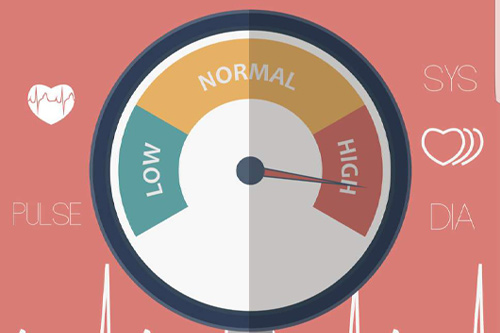 If you have high blood pressure, the best piece of advice anyone can give you is to listen to your body. How you feel can and should dictate the frequency and intensity of your workouts. While it is possible—and preferable—to lose weight while reducing your blood pressure, your top priority is to neutralize the threat of blood pressure before you push yourself toward more dramatic exercise goals. To do this, consistency is your best friend. Frequency (number of exercise sessions per week) is more important than intensity when you are starting out.
If you have high blood pressure, the best piece of advice anyone can give you is to listen to your body. How you feel can and should dictate the frequency and intensity of your workouts. While it is possible—and preferable—to lose weight while reducing your blood pressure, your top priority is to neutralize the threat of blood pressure before you push yourself toward more dramatic exercise goals. To do this, consistency is your best friend. Frequency (number of exercise sessions per week) is more important than intensity when you are starting out.
All of the following exercise recommendations assume that your blood pressure is under control (whether through medication or diet) and is monitored by a doctor.
Aerobic Exercise Recommendations
If you are new to exercise or haven’t been active in a while, start slowly and increase the time and intensity of your workout as you get stronger. A good starting point is 30 minutes of cardiovascular activity, 3 days per week. Examples include walking, swimming and biking.
If 30 minutes is too much, start with 10-20 minutes and increase from there. Eventually, the goal is to work up to 45-60 minutes, 5 days per week.
It is important to warm up before and cool down after each exercise session (5-10 minutes each).
The best activities to do are the ones you enjoy and will stick with.
Notes on Strength Training
Many people with hypertension avoid strength training because they are afraid that it will increase their blood pressure. But research shows that these fears are generally unfounded.
It’s true that if you have high blood pressure, you should avoid strenuous strength-related activities, such as trying to open a sticking window or attempting to move a stalled car. Activities of this type, including isometric strength training, may cause excessively high blood pressure responses and are potentially dangerous for many people with hypertension. Other than that, you are encouraged to follow a sensible strength training routine
Sensible strength training is characterized by:
- Lifting lighter weights for a higher number of reps. (A good weight is one that you can lift for 12-15 repetitions in good form.)
- Moving continuously throughout each exercise (to avoid an isometric hold)
- Breathing throughout each exercise (typically exhaling as your exert effort or lift the weight and inhaling as you return to the starting position)
- NOT lifting maximum weights, performing isometric contractions, or holding your breath. (These practices result in excessive blood pressure responses and should be avoided.)
Strength training is not recommended as the only form of exercise for people with hypertension because it has not consistently been shown to help lower blood pressure. Thus, it is recommended as just one component of a well-rounded fitness program that also includes aerobic exercise (cardio) and flexibility training.
Other Exercise Considerations
Some medications (such as beta-blockers) lower both your resting heart rate and your heart rate when working out. Therefore, when exercising, your heart rate will NOT reflect how hard you are actually working. For individuals on beta-blockers (or similar medications), it is not recommended that you measure your exercise intensity using a heart rate method, such as pulse counting or wearing a heart rate monitor.
Instead, use other measures of exercise intensity such as the Rate of Perceived Exertion (RPE) and/or Talk Test. Get the details about using these simple methods by reading our Exercise Intensity reference guide. Work at an intensity that allows you to breathe comfortably and rhythmically throughout all phases of your workout. This will ensure a safe and comfortable level of exercise.
Exercise is a great way to help lower your blood pressure in combination with a healthy diet and your doctor's treatment program. Remember to always consult your doctor before starting an exercise program and to listen to your body—especially when starting out.
DIABETES AND EXERCISE
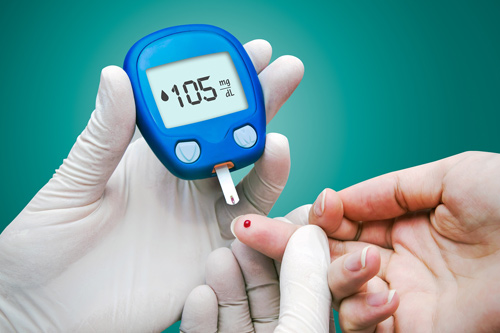 People with diabetes are encouraged to exercise regularly for better blood sugar control and to reduce the risk of cardiovascular diseases. The reason for this is that muscles which are working use more glucose than those that are resting.
People with diabetes are encouraged to exercise regularly for better blood sugar control and to reduce the risk of cardiovascular diseases. The reason for this is that muscles which are working use more glucose than those that are resting.
Muscle movement leads to greater sugar uptake by muscle cells and lower blood sugar levels.
Additional benefits of exercise include a healthier heart, better weight control and stress management.
Exercise is the common term used to describe any bodily activity that enhances or maintains physical fitness and overall health and wellness.
Why is exercise important?
As well as strengthening the cardiovascular system and the body’s muscles, many people exercise to keep fit, lose or maintain a healthy weight, sharpen their athletic skills, or purely for enjoyment.
Frequent and regular physical exercise is recommended for people of all ages as it boosts the immune system and helps protect against conditions such as:
- Heart disease
- Stroke
- Type 2 diabetes
- Cancer and other major illnesses
In fact, it is known to cut your risk of major chronic illnesses/diseases by up to 50% and reduce your risk of early death by up to 30%.
Other health benefits of exercising on a regular basis include:
- Improves mental health
- Boosts self-esteem/confidence
- Enhances sleep quality and energy levels
- Cuts risk of stress and depression
- Protects against dementia and Alzheimer’s disease
Furthermore, exercise is free, can be carried out anywhere at anytime and has an immediate effect on your health.
What counts as exercise?
In the UK, regular exercise is defined by the NHS as completing 150 minutes of moderate intensity aerobic activity a week.
Aerobic activity at moderate intensity basically means exercising at a level that raises your heart rate and makes you sweat. This includes a multitude of sports. For example;
- Fast paced walking
- Light jogging
- Bike riding
- Rowing
- Playing doubles tennis or badminton
- Water aerobics
Cutting the grass, cleaning your home and other daily chores such as shopping don't count towards your 150 minutes of weekly exercise as advances in technology have made these activities far less demanding on the body than for previous generations, who were active naturally more active through work and manual labour.
However, the less time you spend sitting down, the better it will be for your health. Sedentary behaviour, such as sitting or lying down for long periods, increases your risk of weight gain and obesity, which in turn, may also up your risk of chronic diseases such as heart disease and diabetes.
PREGNANCY AND EXERCISING
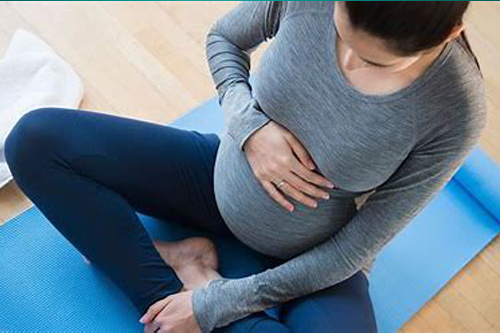 If you have been following a regular exercise program prior to your pregnancy, you should be able to maintain that program to some degree throughout your pregnancy. Exercise does not increase the risk for miscarriage in a normal low risk pregnancy. The important thing is to discuss these pregnancy exercise guidelines with your health care provider and set up the right routine for you.
If you have been following a regular exercise program prior to your pregnancy, you should be able to maintain that program to some degree throughout your pregnancy. Exercise does not increase the risk for miscarriage in a normal low risk pregnancy. The important thing is to discuss these pregnancy exercise guidelines with your health care provider and set up the right routine for you.
Pregnancy Exercise Guidelines
If you are just starting an exercise program as a way of improving your health during your pregnancy, you should start very slowly and be careful not to over exert yourself. Consider a prenatal yoga class that is specifically designed for pregnant women. Shop Yoga for home
- Listen to your body. Your body will naturally give you signals that it is time to reduce the level of exercise you are performing.
- Never exercise to the point of exhaustion or breathlessness. This is a sign that your baby and your body cannot get the oxygen supply they need.
- Wear comfortable exercise footwear that gives strong ankle and arch support.
- Take frequent breaks, and drink plenty of fluids during exercise.
- Avoid exercise in extremely hot weather.
- Avoid rocky terrain or unstable ground when running or cycling. Your joints are more lax in pregnancy, and ankle sprains and other injuries may occur.
- Contact sports should be avoided during pregnancy.
- Weight training should emphasize improving tone, especially in the upper body and abdominal area. Avoid lifting weights above your head and using weights that strain the lower back muscles.
- During the second and third trimesters, avoid exercise that involves lying flat on your back as this decreases blood flow to the uterus.
- Include relaxation and stretching before and after your exercise program.
- Eat a healthy diet that includes plenty of fruits, vegetables and complex carbohydrates.
 If you need to change the percentage of fat in your body in a safe and effective way through a combination of exercises and nutritional guidance, then personal training is for you. This type of program is especially designed to have the best results either if you want to reduce fat or put on weight. For example, either you want to lose or put on 5 kilos, or just to reduce your body’s fat to 5% we will guide you.
If you need to change the percentage of fat in your body in a safe and effective way through a combination of exercises and nutritional guidance, then personal training is for you. This type of program is especially designed to have the best results either if you want to reduce fat or put on weight. For example, either you want to lose or put on 5 kilos, or just to reduce your body’s fat to 5% we will guide you.
Our help is not only limited to your fitness program, but we will also guide and support you to change your way of living so as to gain long lasting results. We will provide you with useful nutritional advice as we believe that right nutrition and exercise are correlated. Additionally, your personal trainer will show you what you have to do outside the gym so as to have better results in the gym.
CYPRUS PERSONAL TRAINING SERVICE FOR WEIGHT LOSS
- Is your body ready to get fit and lose weight?
- To enjoy increased energy and vitality?
- To be able to cope with stress, depression or anxiety better?
- To burn more calories with less effort?
- For a strengthened immune system?
- For a good night’s sleep?
As you know being overweight can lead to high blood pressure, type 2 diabetes, developing colon and breast cancer stroke and well, lets face it, a number of other undesirable outcomes.
So what is our unique approach to weight loss?
Our secret is we believe in an integrated approach. Our personal trainers are unique because we’ve combined a team of leading experts with different skills, with internet tools for personalised service.
You also get:
- A dedicated professional personal trainer
- Invaluable weekly coaching and motivation to achieve your best ever results
- Continuous adjustments to your personalized plan based on your results and activity
Your own personal trainer!
You may have tried programmes in the past that didn’t work for you, and one of the differences is the personal interactions our coaches. Our trainers can make sure you have personalized advice and believe me; they’ll make sure you follow it too! If you stick with our coaches you will achieve your goals.
Obesity
Obesity is considered as the desease of the 21st Century and although many people are trying different things to combat it, at the end the most effective way to deal with it is by adopting a holistic approach towards it.
Obesity is a medical condition in which excess body fat has accumulated to the extent that it may have an adverse effect on health, leading to reduced life expectancy and/or increased health problems.
Effects on Health:
Obesity increases the likelihood of various diseases, particularly heart disease, type 2 diabetes, obstructive sleep apnea, certain types of cancer, osteoarthritis and asthma. As a result, obesity has been found to reduce life expectancy
Dieting and physical exercise are the mainstays of treatment for obesity.
Obesity is a leading preventable cause of death worldwide, with increasing prevalence in adults and children, and authorities view it as one of the most serious public health problems of the 21st century. Obesity is stigmatized in much of the modern world. In 2013, the American Medical Association classified obesity as a disease.
Causes:
At an individual level, a combination of excessive food energy intake and a lack of physical activity is thought to explain most cases of obesity. A list of the main causes follows:
• Diet
• Sedentary lifestyle
• Genetics
• Insufficient sleep
• Some illnesses
• Social determinants
• Infectious agents
 If having better shape and healthier body is what you want, then this is the solution for you. If you want to increase your muscle mass, to have a lean body or to strengthen yourself, personal training is a great choice. Your personal trainer will show you which exercises are the most effective for you and will choose the proper weight, pace and break time to achieve your goals.
If having better shape and healthier body is what you want, then this is the solution for you. If you want to increase your muscle mass, to have a lean body or to strengthen yourself, personal training is a great choice. Your personal trainer will show you which exercises are the most effective for you and will choose the proper weight, pace and break time to achieve your goals.
WEIGHT GAIN SERVICE - PUT ON GAIN IN A HEALTHY AND EFFECTIVE WAY
If you think loosing weight is difficult, then think again! Gaining on weight could be as difficult
Our personal trainers can help you gain on weight using a combination of exercising and nutritional advice.
A person’s build depends largely on genetic factors, which is why it is difficult for a naturally thin person to put on weight. The human body can change to a limited extent through weight training and increased food intake. Gaining or regaining weight can be just as difficult as losing weight. When done in a smart, healthful way, many of the same basic principles apply to both gaining and losing weight.
Reasons for thinness
Some common reasons why a person may find it hard to gain weight include:
- Genetics
- Not eating enough
- Having a very physically active lifestyle or job
- Overexercising.
Please note that some people are too thin because of a disability, eating disorder, substance abuse, or serious medical condition – these conditions are not addressed in this fact sheet.
Eat more – quality first, quantity second
Underweight usually occurs when energy intake is less than the energy used. In other words, you need to eat more in order to gain weight. The secret to healthy weight gain is to make all your calories as nutrient-rich as possible. Consuming more empty-calorie foods like soft drinks and chips is not a successful way to build muscle, strengthen bones or repair tissue after surgery.
Resistance training
Resistance training promotes muscle growth. Examples of resistance training include the use of free weights, weight machines, your own body weight or resistance bands. Suggestions include:
- Seek professional advice. You need guidance from a gym instructor, personal trainer, exercise physiologist or physiotherapist to make sure you are doing each exercise correctly. Good advice will increase your gains and reduce your risk of injury.
- Train just two or three times per week to give your muscles time to recover. If you’re tempted to train more often, remember that muscle growth occurs during recovery.
- Choose compound exercises that work multiple major muscle groups: for example, the squat and bench press.
- Make your workouts short and intense rather than long and leisurely.
- Consider cutting back on other forms of exercise. Remember that resistance training doesn’t have the same cardiovascular benefits as aerobic activities like walking and cycling.
- Don’t waste your time or money on powders, pills and products that claim to increase muscle mass. These claims are not scientifically proven.
EXERCISING AND THE EFFECT ON PSYCHOLOGY
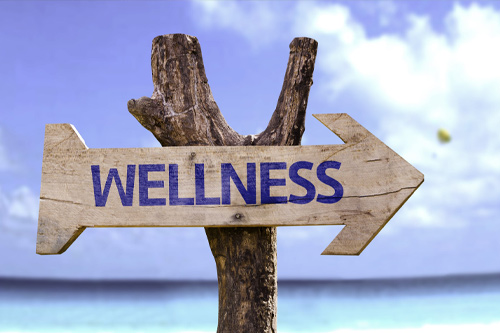 We often hear about the physical benefits of exercise (e.g., increasing heart health), less often are the psychological benefits promoted. Yet, engaging in a moderate amount of physical activity will result in improved mood and emotional states. Exercise can promote psychological well-being as well as improve quality of life.
We often hear about the physical benefits of exercise (e.g., increasing heart health), less often are the psychological benefits promoted. Yet, engaging in a moderate amount of physical activity will result in improved mood and emotional states. Exercise can promote psychological well-being as well as improve quality of life.
The following are common psychological benefits gained through exercise.
- Improved mood
- Reduced stress as well as an improved ability to cope with stress
- Improved self-esteem
- Pride in physical accomplishments
- Increased satisfaction with oneself
- Improved body image
- Increased feelings of energy
- Improved in confidence in your physical abilities
- Decreased symptoms associated with depression
As people experience these psychological benefits, it is likely that they also will be motivated to continue exercises so that they continue to receive these benefits.
How much exercise is needed to produce those effects?
Even a brief walk at low intensity can improve mood and increase energy. As little as 10 minutes of aerobic exercise can have a positive effect.
For long-term benefits, you should exercise 3 times a week for 30 minutes per session at a moderate intensity.
Programs longer than 10 weeks work best for reducing symptoms of depression
EXERCISE AS AN ANTI-STRESS TOOL
Taking frequent effective exercise is one of the best physical stress-reduction techniques available. Exercise not only improves your health and reduces stress caused by unfitness; it also relaxes tense muscles and helps you to sleep.
Exercise has a number of other positive benefits you may not be aware of:
- It improves blood flow to your brain, bringing additional sugars and oxygen that may be needed when you are thinking intensely.
- When you think hard, the neurons of your brain function more intensely. As they do this, they can build up toxic waste products that can cause foggy thinking (you may have experienced the feeling that your brain has "turned to cotton wool"). By exercising, you speed the flow of blood through your brain, moving these waste products faster.Exercise can cause release of chemicals called endorphins into your blood stream. These give you a feeling of happiness and positively affect your overall sense of well-being.
- There is also good evidence that physically fit people have less extreme physiological responses when under pressure than those who are not. This means that fit people are more able to handle the long- term effects of stress, without suffering ill health or burnout.
- There are many wrong approaches to exercise. Some traditionally recommended forms of exercise actually damage your body over the medium- or long-term. Your doctor is a good starting point for recommending good forms of exercise.
NB: If you are not used to taking exercise regularly, then it may be appropriate to take medical advice before starting an exercise program.
An important thing to remember is that exercise should be fun. It is difficult to keep going with an exercise program that you do not enjoy.
WELLNESS
Wellness refers to the optimal health and vitality, to living life to its fullest . wellness is largely determine by the decisions you make about how you live. Here we educate you about wellness and its dimensions. these dimensions are interrelated, each has effects on others.wellness is not static ,ignoring any dimensions can effect your life.Six dimensions of wellness,
- Physical
- Emotional
- Intellectual
- Interpersonal
- Spiritual
- Environmental
What is the deference between health and wellness?
Health refers to the overall condition of a persons body or mind and to the presence or absence of illness or injury. World Health Organization (WHO) defined health in its broader sense in 1946 as "a state of complete physical, mental, and social well-being and not merely the absence of disease or infirmity but Wellness refers to the optimal health and vitality, to living life to its fullest.
 If you have a problem with your body, then with a wide range of exercises and techniques we will help you reduce stress, eliminate pain in the waist, back and nape, we will strengthen your core, improve your body shape and coordinate your moves. This can also help you improve your productivity at work and generally your whole life. Your personal trainer will achieve all the above by helping you improve your balance and symmetry. As a direct result, you will be better able to relax your muscles, to have better flexibility, self esteem and you may be able to improve your immune system.
If you have a problem with your body, then with a wide range of exercises and techniques we will help you reduce stress, eliminate pain in the waist, back and nape, we will strengthen your core, improve your body shape and coordinate your moves. This can also help you improve your productivity at work and generally your whole life. Your personal trainer will achieve all the above by helping you improve your balance and symmetry. As a direct result, you will be better able to relax your muscles, to have better flexibility, self esteem and you may be able to improve your immune system. Consultation involves personal meetings with your personal trainer outside the gym. These meetings aim into educating, informing and guiding the client as far as nutrition, improvement of lifestyle, avoiding bad habits and adaptation of new ones is concerned. Consultation constitutes a great mean of acquiring knowledge you will have for the rest of your life and it is extremely useful so as to start a life you have always wanted but never dreamed of having.
Consultation involves personal meetings with your personal trainer outside the gym. These meetings aim into educating, informing and guiding the client as far as nutrition, improvement of lifestyle, avoiding bad habits and adaptation of new ones is concerned. Consultation constitutes a great mean of acquiring knowledge you will have for the rest of your life and it is extremely useful so as to start a life you have always wanted but never dreamed of having.
CYPRUS EXPERT CONSULTATIONS REGARDING NUTRITION
WEIGHT-CYPRUS.COM offers customized nutrition packages to fit every budget - from a 30-minute, targeted consultation to a comprehensive 4-week nutrition coaching program. All services with the exception of the "Express Consultation" provide an in-depth, customized, written nutrition program based on your wellness goals, performance goals, food preferences, lifestyle and specific health conditions.
Express" Healthy Eating consultation
- Put the "healthy" back in your diet with targeted advice based on your wellness needs/goals with this 30-min phone consultation. Typical Express topics include:
- Nutritional supplements
- Healthy family dining
- Digestive solutions
- Curbing sugar cravings
BASIC HEALTHY EATING consultation
- This service provides a basic evaluation of your current eating habits and nutritional status, with dietary recommendations based on your specific wellness goals. Features include:
- Food intake analysis
- Caloric needs assessment
- Nutritional supplements evaluation & recommendations
Healthy weight loss consultation
This service is tailored to the busy professional who wants to shed pounds while eating healthfully as a lifestyle change - NOT a crash diet. Features include:
- Food intake analysis
- Caloric needs assessment for current weight and goal weight
- Customized meal planning for healthy weight loss
- Nutrition and Lifestyle strategies for weight loss maintenance
- Nutrition supplements: evaluation & recommendations
- Exercise recommendations for weight loss & maintenance
SPORTS NUTRITION for optimal TRAINING & PERFORMANCE consultation
This service zeros in on the how, what and whys of eating and drinking before, during and after your workouts. Learn sports nutrition strategies to optimize your training, performance and recovery.
Other topics addressed include: ergogenic aids, caloric needs and expenditure and foods to facilitate healing of injuries, optimal meals and snacks for training and performance, hydration; pre- and post-performance fuelling.
PERSONAL TRAINING SERVICE – ONE-ON-ONE: ACHIEVE YOUR GOAL FASTER
 A personal trainer provides the motivation, education, guidance, and individual instruction required to achieve your personal fitness goals
A personal trainer provides the motivation, education, guidance, and individual instruction required to achieve your personal fitness goalsTrainers will design a tailored exercise program for each individual that reflects the client’s objectives, fitness level, and experience.
Personal Training Sessions May Include:
- Fitness Assessments (Including health history/PAR-Q and physical consent)
- Program Design - According to your specific needs and goals
- Warm-up, stretching, and cool down
- Machine Training Instruction
- Free Weight Training Instruction
- Cardiovascular Exercise
- Exercise Progression
- Evaluation and Review of Goals
- Program Creativity
- Basic Nutrition
- Exercise ideas for home and travel
- Successful workout plans and programs to meet the needs of every client
What else do you need to know?- Wear comfortable clothing including athletic shoes, and non-jean apparel
- Rescheduling or cancelling sessions must be done 24 hours prior to your session to avoid being charged for that session.
- When you meet with your personal trainer, be sure to read and sign our personal training information sheet thoroughly.
 Semi-private small group personal training sessions are available for groups of 2, 3 or 4 parties.
Semi-private small group personal training sessions are available for groups of 2, 3 or 4 parties.
Each person commits to the same membership level and commits to work out at the same time and place.
In semi-private sessions you'll get your own personalized program, but you'll be working out with your fitness partners. You'll do a combination of paired and solo exercises.
Semi-private sessions work best if all parties have approximately the same fitness level, but we can accommodate a fairly wide range of differences with modifications of the exercises.
If you have ever wanted the personal attention, motivation and results personal training can provide then SMALL GROUP TRAINING is for you. Professional instruction and attention by a Personal Trainer shouldbe accessible for anyone who wants it and by working out in small groups you get all the benefits of personal one-on-one attention without the one-on-one cost.
Our small group training sessions are for a limited number of individuals of any age or fitness level. Our Small Group Training offers a unique opportunity to explore a new dimension of fitness by merging Group Fitness with Personal Training. We are not like the vast majority of large gyms and we pride ourselves on that.
What are the benefits of kettlebells:
•Cardiorespiratory endurance
• Reduction of fat percentage
• Empowerment
• Muscular endurance
• Tightening
• Stimulation
• Increased calorie burning
• Suitable for all levels of athletes
• Freedom of use in any space
• Use by both men and women
WHAT IS TRX® SUSPENSION® TRAINING?
 Born in the U.S. Navy SEALS and developed by Fitness Anywhere®, Suspension Training® is a revolutionary method of leveraged bodyweight exercise. Easily set up the portable TRX® Suspension Trainer™ and you’re in control. Safely perform hundreds of exercises that build power, strength, flexibility, balance, mobility, and prevent injuries, all at the intensity you choose.
Born in the U.S. Navy SEALS and developed by Fitness Anywhere®, Suspension Training® is a revolutionary method of leveraged bodyweight exercise. Easily set up the portable TRX® Suspension Trainer™ and you’re in control. Safely perform hundreds of exercises that build power, strength, flexibility, balance, mobility, and prevent injuries, all at the intensity you choose.
BENEFITS
- Easy to set up and highly portable: The TRX is easy to set-up, is compact and lightweight, making it the perfect home and portable solution for those on the go.
- Fast and easy workouts: The TRX Suspension Trainer allows you to perform hundreds of functional exercises that build strength, flexibility, core stability and endurance.
- All fitness levels and goals: TRX Suspension Training harnesses your own bodyweight to create resistance as you workout and allows you to adjust the degree of difficulty, regardless of your fitness level, age or fitness goals.
- Work out anywhere: If the gym isn’t your thing or you just want to work out in the privacy of your home, your backyard or at the hotel, the TRX is a practical solution for making sure you are able to stay fit.
OTHER BENEFITS:
- Increase Sports Performance: Suspension training builds superior muscular balance, joint stability, mobility, and core strength helping you perform better in any sport. It also improves posture and prevents injuries.
- Unmatched Versatility: The TRX Suspension Trainer delivers greater functionality and versatility than large, expensive machines. Combine the exercises of a cable cross-over machine, a complete set of dumbbells, and a Swiss ball and you start to get an idea of what the TRX can do for your training.
FREQUENTLY ASKED QUESTIONS
Who will benefit from Suspension Training?
Everyone can benefit from Suspension Training. Because the user can effortlessly control the resistance and level of difficulty by simply shifting the position of their body, the TRX Suspension Trainer, is perfect for gentle rehabilitation, hardcore athletic training, and everything in between. Suspension Training also allows for complete ranges of motion while training which allows for a more functional workout routine.
Is Suspension Training appropriate for people who are out of shape or just beginning an exercise program?
Yes, because the user has control over the amount of bodyweight resistance, control of the angle in which they place their body, and can control their stability by their foot placement (wide stance, narrow stance, single leg) which means it can very well be used for people that are not professional or performance athletes nor regularly active. Suspension Training can also be used to assist a number of movements that are too difficult for many deconditioned users.
How is Suspension Training different from other types of resistance training?
Traditional weight training often only works one muscle at a time which is contradictory to the normal coordinated muscle effort used to complete most activities. Focusing on only one muscle at a time is more likely to lead to overuse injuries and muscular imbalances, as well as potentially limit strength and movement gains. Suspension Training allows for the use of multiple planes of motion and works multiple muscles and joints simultaneously.
I have heard that is great for rehabilitation and physical therapy after an injury?
Many physical therapists are currently using it to help their patients recover from various injuries. The ease of adjusting resistance, functionality of using body weight and the closed kinetic chain nature of many of the exercises make it a very powerful tool for this type of use.
What is the best way to ease into Suspension Training?
To ease into suspension training it is best to choose 5 to 6 exercises that are suitable to your fitness level and do a single set of each working at 10 to 12 repetitions. You should start with a less advanced resistance or body position and take the time to make sure that your form is perfect. Also take lots of rest between exercises. Once you feel comfortable with the movements you can progress a number of ways. Try to slowly introduce more challenging resistances, increase the number of exercises and the volume of your workout in terms of sets and reps and decrease the rest you take between each movement and between sets.
How long do I have to workout?
20 to 30 minutes of training on the TRX is a great place to start. Adding sets, reps or additional exercises will allow you to slowly increase your workout time if you are looking to do so. What is most important to remember is that doing even 10 minutes of activity is much better than nothing at all. If you know that you do not have time to get through your full routine, try to resist the urge to blow it off all together. You will find you can still get lots of benefit from a shortened session.
Do I need any other equipment?
The TRX, your body and bit of motivation is all you will need to get a great workout! If you have other equipment available to you, it can be integrated into your program to provide increased variety and different challenge.
What is the TRX Suspension Trainer?
The TRX is the original bodyweight Suspension Training system consisting of 12 feet of nylon-webbed straps, handles, and various anchors that can be attached to any sturdy weight bearing base.
What is the TRX made of? Is it elastic?
No, the TRX is constructed of industrial strength soft nylon webbing, so the resistance is generated by variable bodyweight and gravity rather than the stretching of elastic bands.
Is there a weight limit for the size of person using the TRX Suspension Trainer?
We recommend a maximum user weight of 160 Kg. We performed a product design testing that includes a 4 Times Load Testing e. This means we take four times the maximum user weight and load it on different parts of the TRX to ensure that the product will not fail. So although the max user weight is 160 Kg, we have actually loaded it with 640 Kg.
 HIIT is a High-Intensity Interval Training workout. It’s a short, intense style of training where the thrill and motivation comes from pushing your physical and mental limits. This workout uses a variety of barbell, dumbbell and body weight exercises to blast all major muscle groups and provides the challenge and intensity you need to get results fast. A high intensity, low impact workout, it's scientifically proven to return rapid results and motivating you to go harder to get fit, fast. The frequency 1-2 HIIT sessions per week
HIIT is a High-Intensity Interval Training workout. It’s a short, intense style of training where the thrill and motivation comes from pushing your physical and mental limits. This workout uses a variety of barbell, dumbbell and body weight exercises to blast all major muscle groups and provides the challenge and intensity you need to get results fast. A high intensity, low impact workout, it's scientifically proven to return rapid results and motivating you to go harder to get fit, fast. The frequency 1-2 HIIT sessions per week
- Maximum performance, minimum time
- Burn calories for hours after your workout
- Push your mental and physical limits
- Short and intense
- Rapidly improve strength
- Increase lean muscle
- Increase your metabolism and burn calories for hours after the workout
- Rapidly improve athletic performance
- Increase explosiveness
- Build a lean, athletic body
- Rapidly improve cardiovascular fitness
- Increase speed
- Maximize calorie burn during the workout




